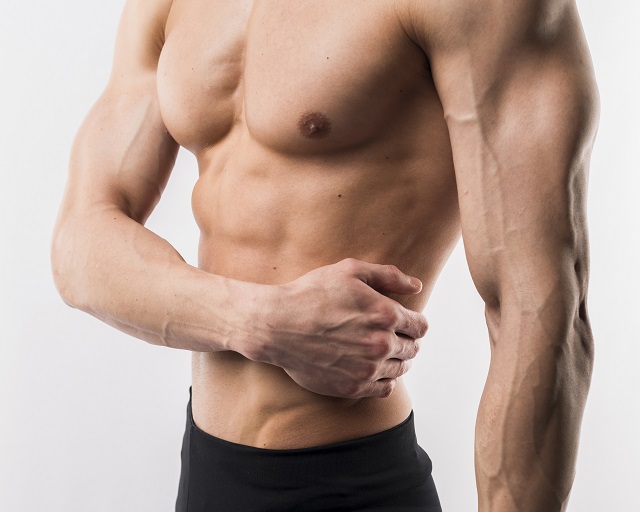How To Manage Pain After Gynecomastia Surgery In Riyadh
Gynecomastia Surgery in Riyadh(جراحة التثدي في الرياض) is a commonly performed procedure to reduce excess breast tissue in men, helping them achieve a more masculine chest contour. Like any surgery, managing pain effectively after the procedure is essential for a smooth recovery and to improve overall patient comfort.
Understanding Pain After Gynecomastia Surgery
Pain after gynecomastia surgery is a natural part of the healing process, as the body repairs tissues manipulated during the operation. Patients typically experience soreness, tenderness, and mild swelling around the chest area. This pain usually peaks within the first 48 to 72 hours but gradually diminishes over the following weeks.
Managing discomfort well can speed up recovery and allow patients to resume their daily activities sooner. Different factors such as the surgical technique, individual pain tolerance, and adherence to post-operative care influence the intensity and duration of pain.

Effective Pain Management Strategies Post Gynecomastia Surgery in Riyadh
When it comes to managing pain after Gynecomastia Surgery in Riyadh, a combination of medical and lifestyle approaches is recommended. Using prescribed painkillers, following care guidelines, and making appropriate lifestyle adjustments work together to ease recovery.
Medication and Pain Relief Options
Surgeons usually prescribe non-steroidal anti-inflammatory drugs (NSAIDs), acetaminophen, or mild opioids for pain control.
It is important to take medications exactly as directed to avoid complications or prolonged discomfort.
Avoid self-medicating or overuse of painkillers without consulting a healthcare provider.
Rest and Physical Recovery
Adequate rest is vital for healing; avoid strenuous activities and heavy lifting for at least 2 weeks.
Gradually reintroduce light activities as you begin to feel more comfortable.
Elevating the upper body during rest may reduce swelling and improve circulation.
Compression Garments and Care
Wearing compression garments as advised helps minimize swelling and supports the chest contour.
These garments also alleviate discomfort by reducing skin movement over the surgical site.
Proper garment fit is crucial—too tight can increase pain, too loose can reduce effectiveness.
Cold Compress Usage
Applying cold packs intermittently in the first 48 hours can reduce swelling and numb pain.
Use a cloth or protective layer between the pack and skin to prevent frostbite.
Do not apply ice directly to the incision area.
Wound Care and Hygiene
Keeping the surgical site clean and dry is essential to prevent infections that can worsen pain.
Follow instructions on showering and dressing changes meticulously.
Monitor for signs of infection such as unusual redness, discharge, or fever.
Lifestyle Modifications for Comfort
Besides medical care, several lifestyle changes can enhance pain management after gynecomastia surgery.
Nutrition and Hydration
Eating a balanced diet rich in vitamins and protein aids tissue healing.
Staying hydrated helps reduce inflammation and promote cleansing of toxins.
Avoid Smoking and Alcohol
Smoking impairs blood flow and slows down healing, increasing pain risk.
Alcohol can interfere with medications and increase swelling.
Sleep Positioning
Sleep on your back with cushions to support your upper body.
Avoid sleeping on your stomach or sides during early recovery to prevent pressure on the chest.
When to Contact Your Doctor
While mild pain is expected, certain symptoms require immediate medical attention to avoid complications:
Severe or worsening pain that is not relieved by medications.
Signs of infection such as increased redness, warmth, foul-smelling discharge, or fever.
Excessive swelling or bruising that appears suddenly.
Difficulty breathing or chest tightness.
Prompt response to these warning signs ensures safe recovery.
Psychological Benefits of Proper Pain Management
Managing pain effectively not only improves physical healing but also boosts mental wellbeing. Reduced discomfort lowers stress, anxiety, and post-operative depression risks. Patients often feel more motivated to follow recovery instructions and regain confidence with less pain.
Frequently Asked Questions
How long does the pain last after gynecomastia surgery?
Pain is most intense during the first 2 to 3 days and gradually decreases over 2 to 4 weeks as healing progresses.
Is it normal to experience sharp pains after surgery?
Mild sharp pains can occur as tissues heal, but persistent or severe sharp pain should be evaluated by a doctor.
Can exercise help reduce pain after gynecomastia surgery?
Gentle walking can improve circulation, but strenuous exercise should be avoided until cleared by your surgeon.
Are there natural remedies to help manage post-surgical pain?
Cold compresses and rest are effective natural methods; however, always combine them with prescribed medical care.
When can I stop taking pain medication?
Pain medication should be tapered off as pain decreases; consult your surgeon before stopping any medications.
Does pain management affect the outcome of gynecomastia surgery?
Proper pain management supports healing, reduces complications, and contributes to better overall surgical results.